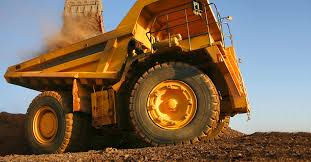A report published by the parliament’s research center provides a general overview of mining and mineral industries in North Khorasan Province, located in northeast Iran.
The report, referring to data provided by the Iranian Mining Engineering Organization, indicates that 62 of the total 83 mines in the province – mostly gypsum mines— are currently active, showing a growth in the ratio of active mineral processing plants to the total number of mines in the province, the Persian daily Ta’adol reported.
Presently, 34 mineral processing plants in the province produce cement, steel, aluminum, and nonmetallic minerals, the report suggests, adding that the huge investments made by Iran Alumina Company to process bauxite into alumina have created great potential for the aluminum industry in the province.
Supplying bauxite —the raw material for producing alumina— is one of the most serious challenges faced by the aluminum industry. Iran’s biggest proven bauxite reserve is the Jajaram bauxite mine in North Khorasan Province which has less than 20 million tons of bauxite. Every four kilograms of bauxite yields 1.93 kilograms of alumina; while it takes 1.93 kilograms of alumina to produce one kilogram of aluminum. Therefore, Iran’s biggest bauxite reserve will merely yield 5 million tons of aluminum, which will run out in four years if the 20-Year Vision Plan, which targets an annual production of 1.5-million-ton of aluminum by 2025, is to be fully implemented.
Calcite and barite, with 1.89 million tons and 45,000 tons of proven reserves respectively, are other minerals found in North Khorasan Province which could generate huge profits for investors. Barite usually comes with quartz and calcite and has various applications in different industries for making tires, high-quality papers, cables, plastics, rubber, paints, ceramics, transparent glasses, porcelain, cosmetics, and brake pads among others. The province’s main challenge for extracting calcite and barite is the lack of modern machinery and equipment in the mines. According to the report, only three out of ten calcite mines in the province are currently active due to the mine owners’ inability to modernize the mines.
The report also suggests investing in tile and ceramics industries in North Khorasan Province in view of the abundant raw material resources for tile manufacturing and the province’s vicinity to Turkmenistan, a potential market for Iranian tiles.
Decorative building stones are cited by the report as another sector suitable for investment, observing that the numerous high-quality stone mines in the province need to be equipped with high-tech machinery and skilled workforce. The report suggests that if properly utilized, these mines can not only supply the domestic market but also enable the country to export decorative stones to the regional markets.
The report points out easy access to the Central Asian countries and availability of basic industries such as steel, cement, petrochemicals, and aluminum as the main advantages of the province; while referring to the mineral companies’ insufficient financial resources as the major impediment to their development.


